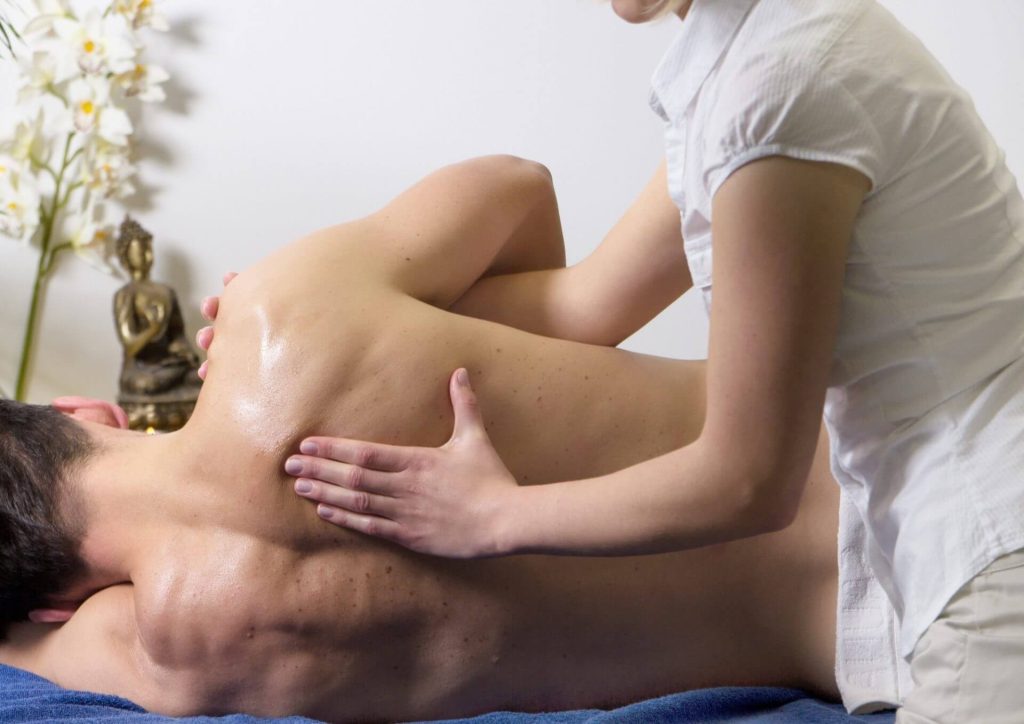Are you wondering how often you should indulge in the blissful experience of a back massage? We all know that massages are a wonderful way to unwind and relieve stress, but finding the right balance can be tricky. In this article, we will explore the ideal frequency to receive a back massage, taking into consideration factors such as your lifestyle, physical health, and personal preferences. Whether you’re a frequent massage enthusiast or new to the therapeutic world of bodywork, we’ve got you covered with valuable insights and recommendations. So sit back, relax, and let us guide you towards the optimal frequency for a rejuvenating back massage.
Factors to Consider
Frequency based on lifestyle
When considering how often you should get a back massage, your lifestyle is an important factor to consider. If you lead a highly active and strenuous lifestyle, such as being involved in regular exercise or sports, you may find that your muscles become more tense and you experience more stress on your back. In this case, getting a back massage more frequently can help with muscle recovery and prevent injuries. On the other hand, if you have a sedentary lifestyle and spend most of your time sitting at a desk, you may still benefit from regular massages to counteract the effects of poor posture and muscle tension from being in the same position for long periods of time.
Frequency based on physical condition
Another important factor to consider is your physical condition. If you have existing back pain or muscle tightness, getting a back massage on a regular basis can provide relief and help promote healing. However, if you have any pre-existing medical conditions or injuries, it is important to consult with a healthcare professional before starting any massage regimen. They can provide guidance on the frequency and type of massage that would be most beneficial for your specific condition.
Frequency based on stress levels
Stress has a significant impact on our overall well-being, including our physical health. Back massages are well-known for their ability to help reduce stress levels and promote relaxation. If you find yourself constantly stressed or overwhelmed, incorporating regular back massages into your self-care routine can be highly beneficial. Not only can they help alleviate physical tension, but they also provide an opportunity for quiet time and relaxation, allowing you to recharge and rejuvenate.

This image is property of facesspa.com.
Types of Back Massage
1. Swedish Massage
Swedish massage is the most common type of massage that people are familiar with. It involves long, flowing strokes, kneading, and gentle tapping motions on the muscles. This type of massage is great for relaxation and can help to relieve muscle tension and improve circulation. Swedish massage is generally a gentle and soothing massage, making it suitable for most people.
2. Deep Tissue Massage
Deep tissue massage is a more intense and focused massage technique that targets the deeper layers of muscle and connective tissue. This type of massage is beneficial for individuals with chronic muscle pain or injuries, as it can help to release tension and break down scar tissue. However, due to the intense pressure applied during a deep tissue massage, it may not be suitable for everyone. If you have any concerns or pre-existing conditions, it is best to consult with a qualified massage therapist before opting for a deep tissue massage.
3. Sports Massage
Sports massage is specifically designed for athletes or individuals engaged in regular physical activity. It focuses on improving athletic performance, preventing injuries, and promoting muscle recovery. Sports massage techniques can vary depending on the individual’s sport or physical activity, and it is often geared towards addressing the specific needs of the client. If you are an active individual or participating in sports, incorporating regular sports massages into your routine can help enhance your performance and reduce the risk of injuries.
4. Thai Massage
Originating from Thailand, Thai massage combines stretching, deep compression, and yoga-like positions to improve flexibility, relieve muscle tension, and promote relaxation. During a Thai massage, the therapist uses their hands, knees, legs, and feet to apply pressure to the body’s energy lines and stretch the body into various poses. This type of massage is generally more interactive and requires active participation, as the recipient is moved into different positions. Thai massage can be invigorating for the body and mind, making it a popular choice for those looking for a unique and holistic massage experience.
5. Hot Stone Massage
Hot stone massage involves the use of smooth, heated stones placed on specific areas of the body, combined with traditional massage techniques. The heat from the stones helps to relax the muscles, allowing the therapist to apply deeper pressure and promote relaxation. Hot stone massage is particularly beneficial for individuals with muscle tension, as the heat helps to warm and loosen tight muscles. However, it may not be suitable for everyone, especially those with certain medical conditions or sensitivities to heat.

This image is property of chopra.brightspotcdn.com.
Benefits of Regular Back Massages
1. Pain reduction and muscle relaxation
One of the primary benefits of regular back massages is pain reduction and muscle relaxation. Whether you experience chronic back pain or occasional muscle tension, a skilled massage therapist can target the specific areas of discomfort and help to alleviate pain and promote relaxation. By manipulating the muscles and soft tissues, a back massage can help release tension, increase blood flow, and promote the release of endorphins, which are natural painkillers. This can lead to reduced pain, improved range of motion, and an overall sense of well-being.
2. Improved blood circulation
Massage therapies, including back massages, have been shown to improve blood circulation. The pressure applied during a massage helps to dilate blood vessels, allowing for increased blood flow to the targeted areas. Improved blood circulation means that oxygen and nutrients are delivered more efficiently to the muscles, promoting faster healing and recovery. Additionally, the removal of waste products and toxins is enhanced, which can further aid in reducing muscle soreness and tension.
3. Stress and anxiety relief
Stress and anxiety are increasingly common in today’s fast-paced world. Regular back massages can provide much-needed relief from the pressures of daily life and help promote relaxation. The soothing nature of a massage, combined with the release of endorphins, can reduce the levels of stress hormones in the body, such as cortisol, and increase feelings of relaxation and calmness. Incorporating a back massage into your routine can provide a dedicated time for self-care and allow you to unwind and recharge.
4. Enhanced flexibility and posture
Regular back massages can also contribute to improved flexibility and posture. By releasing muscle tension and increasing blood flow to the muscles, massages can help to lengthen and loosen tight muscles, thereby enhancing flexibility. This can be particularly beneficial for individuals who are involved in activities that require a wide range of motion, such as athletes or dancers. Additionally, massages can help alleviate the effects of poor posture caused by prolonged sitting or standing, leading to improved alignment and better posture over time.

This image is property of media.post.rvohealth.io.
When to Avoid Back Massages
While back massages can provide numerous benefits, there are certain situations where it is best to avoid them. It is essential to prioritize your safety and well-being, and consult with a healthcare professional if you have any concerns or pre-existing conditions. Here are some situations in which you should avoid getting a back massage:
1. Recent injuries or surgery
If you have recently undergone surgery or experienced any acute injuries, it is important to allow your body time to heal before getting a back massage. Massage therapy may interfere with the healing process or cause further damage in these situations. It is best to consult with your healthcare provider and follow their recommendations regarding massage treatments.
2. Certain medical conditions
Certain medical conditions may be contraindications for back massages, as they can exacerbate symptoms or interfere with treatment plans. These conditions may vary, but some examples include open wounds, fractures, severe osteoporosis, cancer, and circulatory disorders. If you have any pre-existing medical conditions, it is crucial to discuss them with your healthcare provider to determine if a back massage is suitable for you.
3. Infections or skin conditions
If you have any active infections or skin conditions, it is advisable to avoid back massages as they can spread the infection or irritate the affected area further. Examples include rashes, burns, skin infections, or any visible wounds. Wait until the infection or condition has cleared up before scheduling a massage session.

This image is property of images.squarespace-cdn.com.
Frequency Recommendations
1. Recommendations for general well-being
For general well-being and maintenance, it is recommended to get a back massage once every four to six weeks. This frequency allows for regular relaxation, muscle tension release, and overall stress reduction. By incorporating regular back massages into your self-care routine, you can prevent the build-up of muscle tension and promote a sense of well-being.
2. Recommendations for chronic conditions
Individuals with chronic conditions that cause ongoing back pain or muscle tightness may benefit from more frequent back massages. Depending on the severity of the condition, it is generally recommended to schedule massages once or twice a week initially, and then gradually decrease the frequency as symptoms improve. Discussing your specific needs with a qualified massage therapist can help determine the optimal frequency and duration of your massage treatments.
3. Recommendations for stress relief
If stress relief is your primary goal, back massages can be scheduled on a weekly or bi-weekly basis. This frequency allows for consistent stress reduction and relaxation. By incorporating regular massage sessions into your routine, you can create a dedicated time for self-care and promote a sense of calm and well-being.

This image is property of lavenderamassage.com.
Conclusion
When it comes to how often you should get a back massage, there are several factors to consider. Your lifestyle, physical condition, and stress levels all play a role in determining the frequency that would be most beneficial for you. Regular back massages can provide numerous benefits, including pain reduction, improved circulation, stress relief, and enhanced flexibility. However, it is essential to consult with a qualified healthcare professional and listen to your body’s needs. By finding the right balance and incorporating back massages into your self-care routine, you can promote overall well-being and enjoy the many advantages that massage therapy has to offer.
